Hibiscus, with its large, exotic, and vibrant blooms, can instantly transform any garden or balcony into a tropical paradise. Known for its striking colors—ranging from bright reds and yellows to soft pinks and whites—hibiscus plants are not only beautiful but also surprisingly easy to grow if you understand their needs. Whether you live in a tropical climate or want to bring a touch of the tropics to your home in pots, hibiscus can reward you with continuous blooms and lush foliage.
This guide will take you step-by-step through how to start growing hibiscus for tropical blooms, from selecting the right variety to ensuring year-round care.
1. Choosing the Right Hibiscus Variety
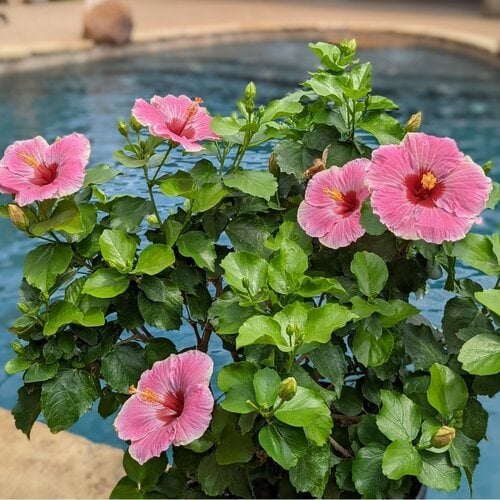
Before planting, you’ll need to choose between tropical hibiscus (Hibiscus rosa-sinensis) and hardy hibiscus (Hibiscus moscheutos):
- Tropical Hibiscus: Perfect for warm climates or indoor growing. They bloom year-round in frost-free zones and have glossy, dark green leaves with flowers in brilliant shades of red, yellow, orange, and pink.
- Hardy Hibiscus: Can survive in cooler climates (USDA zones 4–9) and produce large blooms in summer. The leaves are more matte, and the plants die back in winter before re-sprouting in spring.
Tip: If you live in a colder climate, choose hardy hibiscus or grow tropical hibiscus in pots so you can bring them indoors during winter.
2. Selecting the Perfect Growing Location
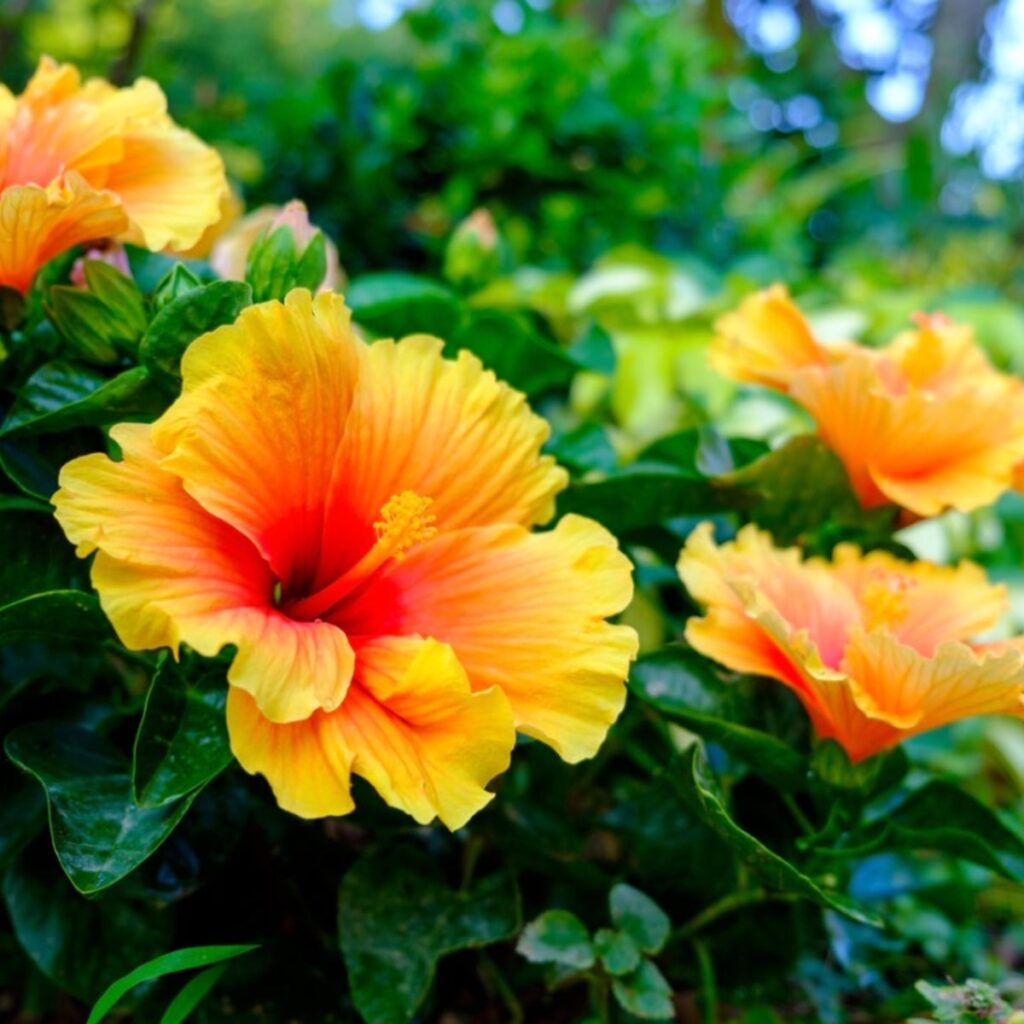
Hibiscus plants love the sun. They need at least 6–8 hours of direct sunlight daily to produce their best blooms.
- Outdoors: Place hibiscus in a sunny garden bed, along a fence, or on a sunny patio.
- Indoors: Position them near a south- or west-facing window where they receive bright light.
- Pots: Use lightweight, movable containers so you can chase the sunlight or bring them indoors during cold weather.
Note: In extremely hot climates, they may need light afternoon shade to prevent leaf scorching.
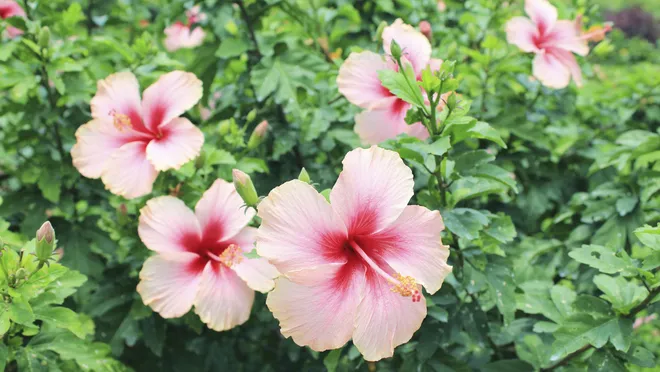
3. Preparing the Soil
Hibiscus thrives in well-draining, slightly acidic soil with a pH of 6.0–6.8.
- Garden Soil: Mix equal parts garden soil, compost, and sand to improve drainage.
- Potting Mix: Use a high-quality potting mix enriched with organic matter. Add perlite or coarse sand for better aeration.
- Avoid Heavy Clay: Waterlogged soil can lead to root rot, one of hibiscus’s biggest enemies.
4. Planting Hibiscus Step-by-Step
For Garden Planting:
- Dig a Hole twice as wide as the root ball but not deeper.
- Loosen the Roots if the plant is pot-bound.
- Place the Plant in the hole so the base of the stem is level with the soil surface.
- Backfill with Soil and gently firm it around the roots.
- Water Thoroughly to help settle the soil.
For Pot Planting:
- Choose a pot at least 12–14 inches in diameter with drainage holes.
- Fill halfway with potting mix.
- Place the hibiscus in the pot and fill around it, leaving 1–2 inches at the top for watering space.
- Water deeply until it drains from the bottom.
5. Watering for Healthy Growth
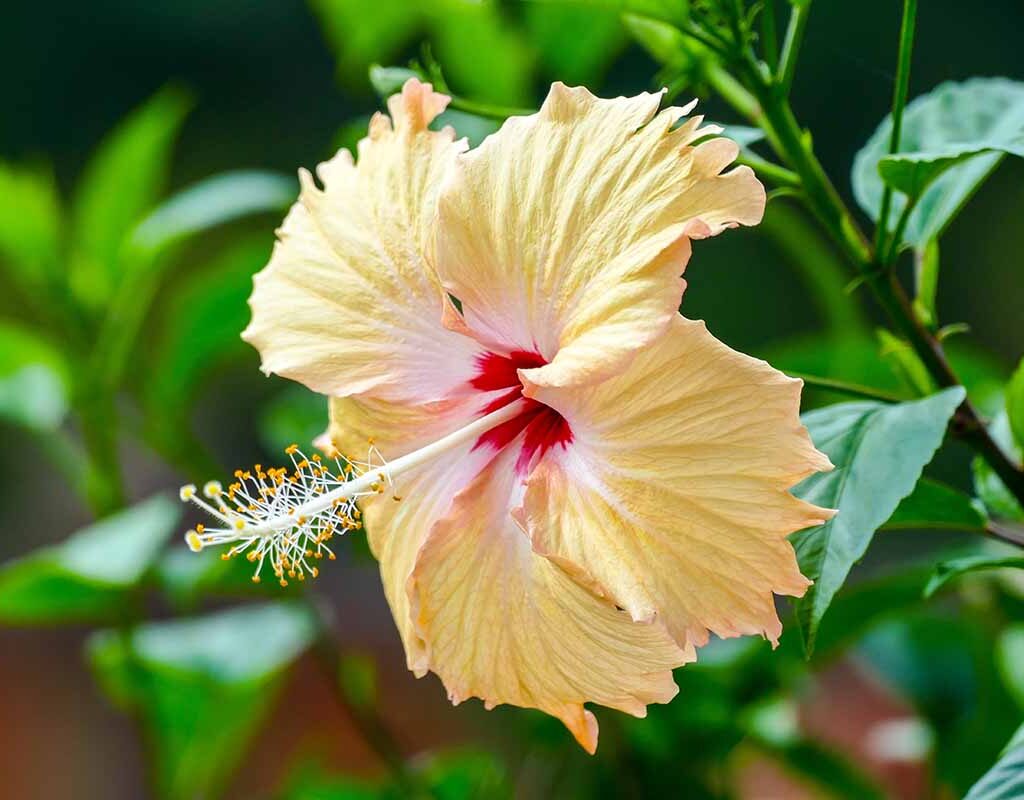
Hibiscus is a thirsty plant, especially in warm weather. However, it dislikes sitting in soggy soil.
- During Summer: Water daily for potted plants and 2–3 times a week for garden plants.
- During Winter: Reduce watering frequency; only water when the top inch of soil feels dry.
- Rule of Thumb: Keep soil consistently moist but never waterlogged.
Tip: Mulching around the base helps retain moisture and keeps roots cool.
6. Feeding Hibiscus for Maximum Blooms
Hibiscus plants are heavy feeders. To get abundant flowers, they need regular fertilizing.
- Use a balanced liquid fertilizer (like 10-10-10) every 2 weeks during the growing season.
- For more blooms, switch to a high-potassium fertilizer (like 10-20-20) in mid-summer.
- Avoid high-phosphorus fertilizers, as they can damage roots.
7. Pruning for Shape and More Flowers
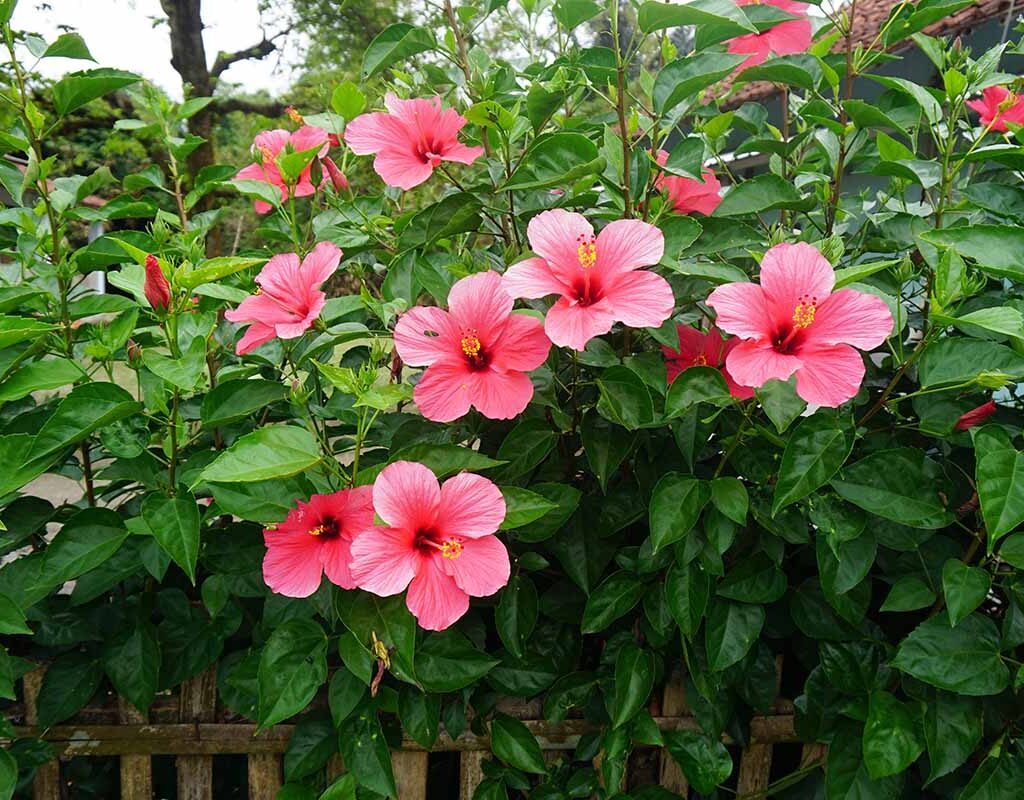
Pruning keeps your hibiscus healthy, encourages new growth, and increases flowering.
- When to Prune: Early spring before new growth starts.
- How to Prune: Cut back one-third of the plant, removing weak or crossing branches.
- Deadheading: Remove spent blooms to encourage continuous flowering.
Bonus: Hibiscus flowers only last a day, but regular pruning ensures you have new buds ready to replace them.
8. Protecting Hibiscus from Pests and Diseases
Common pests include:
- Aphids (sap-sucking insects that cause curled leaves)
- Spider Mites (tiny pests that cause yellow stippling on leaves)
- Whiteflies (tiny flying insects on leaf undersides)
Solutions:
- Spray with insecticidal soap or neem oil weekly until pests disappear.
- Keep plants healthy with proper watering and feeding to prevent stress-related infestations.
Diseases to watch for:
- Root Rot (from overwatering)
- Leaf Spot (fungal infection from high humidity)
Tip: Ensure good air circulation and avoid overhead watering to reduce fungal risks.
9. Overwintering Hibiscus in Cold Climates
If you grow tropical hibiscus in a cooler climate, you must protect it from frost:
- Bring Indoors before temperatures drop below 50°F (10°C).
- Place in a sunny indoor location or under grow lights.
- Water less frequently, but don’t let the soil dry completely.
- Resume regular watering and feeding in spring before moving it back outdoors.
10. Encouraging Year-Round Blooms
To keep your hibiscus blooming as much as possible:
- Give it consistent light (even indoors).
- Maintain steady moisture and regular feeding.
- Prune lightly throughout the season to stimulate new buds.
11. Common Mistakes to Avoid
- Overwatering – Causes root rot and yellow leaves.
- Too Little Sunlight – Leads to weak growth and few blooms.
- Neglecting Fertilizer – Results in fewer flowers and pale leaves.
- Skipping Pruning – Makes the plant leggy and less productive.
Final Thoughts
Growing hibiscus for tropical blooms is a rewarding experience that combines beauty and ease of care. By choosing the right variety, giving it plenty of sunlight, maintaining healthy soil, watering correctly, and feeding regularly, you can enjoy a steady parade of colorful blossoms.
Whether you plant them in the garden or in decorative pots on your balcony, hibiscus will reward you with a lush, vibrant display that instantly transports you to a tropical paradise—no plane ticket required.




Leave A Comment